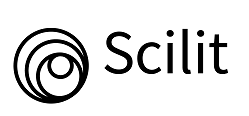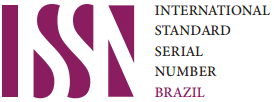Selective serotonin reuptake inhibitors in the treatment of panic disorder: a systematic review of placebo-controlled studies
DOI:
https://doi.org/10.25118/2763-9037.2012.v2.1013Keywords:
serotonin, panic disorderAbstract
Introduction: Panic disorder (PD) is a condition with high prevalence in the population and high morbidity. Selective serotonin reuptake inhibitors (SSRIs) are drugs widely used in clinical practice for the treatment of this disorder. Objective: To carry out an updated systematic review of published studies that compare, in a double-blind and randomized way, the effect of SSRIs versus the placebo effect in PD and to describe the mechanism of action of this drug class on anxiety symptoms. Methodology: A systematic review was carried out in Medline/PubMed" and "Web of Science - ISI" databases, using the Mesh terms as search keywords: panic disorder, placebo, fluoxetine, sertraline, paroxetine, citalopram, escitalopram and fluvoxamine. Results: Eleven studies were included, all of which demonstrate the superiority of SSRIs over placebo, despite the fact that a significant placebo effect was observed in patients with PD. Conclusion: The inhibitory action of serotonin on panicogenesis has been confirmed by several studies. SSRIs are one class effective drug for the treatment of PD and placebo-controlled are important for this evaluation. there is no evidence of differential efficacy among drugs in this class. Long-term controlled studies are still needed to assess the effects of continuing these medications for prolonged periods.
Downloads
Metrics
References
American Psychiatric Association. Practice Guideline for Treatment of Patients With Panic Disorder (Second Edition). American Psychiatric Publishing Inc, VA, USA (2009).
Kaspers, Resinger E. Panic disorder: the place of benzodiazepines and selective serotonin reuptake inhibitors. Eur. Neuropsichopharmacol. 11, 307-321 (2001). DOI: https://doi.org/10.1016/S0924-977X(01)00100-6
Garakani H, Zitrin CM, Klein DF. Treatment of panic disorder with imipramine alone. Am. ). Psychiatry 141(3), 446-448 (1984). DOI: https://doi.org/10.1176/ajp.141.3.446
Mavissakalian M, Perel JM, Michelson L. The relationship of plasma imipramine and N-desmethylimipramine to improvement in agoraphobia. ). Clin. Psychopharmacol. 4(1), 36-40 (1984). DOI: https://doi.org/10.1097/00004714-198402000-00006
Zitrin CM. Differential treatment of phobias: useof imipramine for panic attacks. ). Behav. Ther. Exp. Psychiatry 14(1), 11-18 (1983). DOI: https://doi.org/10.1016/0005-7916(83)90006-X
Cassano GB, Petracca A, Perugi G et al. Clomipraminee for panic disorder: |. The first 10 weeks of a long-term comparison with imipramine. ). Affect. Disord. 14(2), 123-127 (1988). DOI: https://doi.org/10.1016/0165-0327(88)90054-7
Lydiard RB, Morton WA, Emmanuel NP et al. Preliminary report: placebo-controlled, double-blind study of the clinical and metabolic effects of desipramine in panic disorder. Psychopharmacol. Bull. 29(2), 183-188 (1993).
Nardi AE, Nascimento |, Valença AM et al. Respiratory panic disorder subtype: acute and long-term response to nortriptyline, a noradrenergic tricydlic antidepressant. Psychiatry Res. 120(3), 283-293 (2003). DOI: https://doi.org/10.1016/S0165-1781(03)00132-X
The American Psychiatric Publishing Textbook of Psychiatry (5th Edition). Hales RH, Yudofsky SC, Gabbard GN (Eds). American Psychiatric Publishing Inc, VA, USA (2008).
Zohar ), Westenberg HG. Anxiety disorders: a review of tricyclics antidepressants and selective serotonin reuptake inhibitors. Acta Psychiatry Scand. Supl. 403, 39-49 (2000). DOI: https://doi.org/10.1111/j.1600-0447.2000.tb10947.x
Coplan JD, Pine DS, Papp LA, Gorman JM. An algorithm-oriented treatment approach for panic disorder. Psychiatr. Ann. 26, 192-201 (1996). DOI: https://doi.org/10.3928/0048-5713-19960401-09
Pollack MH, Smoller JW. Pharmacologic approaches to treatment-resistant panic disorder. In: Challenges in Clinical Practice: Pharmacologic and Psychosocial Strategies. Pollack MH, Otto MW, Rosenbaum JF (Eds). Guilford Press, NY, USA, 89-112 (1996).
Stahl SM. Mechanism of action of serotonin selective reuptake inhibitors: serotonin receptors and pathways mediate therapeutic effects and side effects. ). Affect. Disord. 51, 215-235 (1998). DOI: https://doi.org/10.1016/S0165-0327(98)00221-3
Maron E, Shlik ). Serotonin function in panic disorder: important, but why? Neuropsychopharmacology 31,111 (2006). DOI: https://doi.org/10.1038/sj.npp.1300880
Kennett GA, Lightowler S, de Biasi V et al. Effect of chronic administration of selective 5-hydroxytryptamine and noradrenaline uptake inhibitors on a putative index of 5-HT2C/2B receptor function. Neuropharmacology 33(12), 1581-1588 (1994). DOI: https://doi.org/10.1016/0028-3908(94)90133-3
Yamauchi M, Tatebayashi T, Nagase K, Kojima M, Imanishi T. Chronic treatment with fluvoxamine desensitizes 5-HT2C. receptor-mediated hypolocomotion in rats. Pharmacol. Biochem. Behav. 78(4), 683-689 (2004). DOI: https://doi.org/10.1016/j.pbb.2004.05.003
Goddard AW, Sholomskas DE, Walton KE et al. Effects of tryptophan depletion in panic disorder. Biol. Psychiatry 36, 775-777 (1994). DOI: https://doi.org/10.1016/0006-3223(94)90091-4
Kent JM, Coplan JD, Martinez ), Karmally W, Papp LA, Gorman JM. Ventilatory effects of tryptophan depletion in panic disorder: a preliminary report. Psychiatry Res. 64, 83-90 (1996). DOI: https://doi.org/10.1016/0165-1781(96)02840-5
Gorman JM, Kent JM, Sullivan GM, Coplan JM. Neuroanatomical hypothesis of panic disorder, revised. Am). Psychiarry 157(4), 4933-505 (2000). DOI: https://doi.org/10.1176/appi.ajp.157.4.493
Maron E, Kuikka JT, Shlik ), Vasar V, Vanninen E, Tiihonen ). Reduced brain serotonin transporter binding in patients with panic disorder. Psychiatry Res. 132, 173-181 (2004). DOI: https://doi.org/10.1016/j.pscychresns.2003.10.004
Inoue T, Li XB, Abekawa T et al. Selective serotonin reuptake inhibitor reduces conditioned fear through its effect in the amygdale. Eur. ). Pharmacol. 497, 311-316 (2004). DOI: https://doi.org/10.1016/j.ejphar.2004.06.061
Michelson D, Lydiard RB, Pollack MH et al, Outcome assessment and clinical improvement in panic disorder: evidence from a randomized controlled trial of fluoxetine and placebo. Am ). Psychiatry 155,1570-1577 (1998). DOI: https://doi.org/10.1176/ajp.155.11.1570
Londborg PD, Wolkow R, Smith WT etal. Sertraline in the treatment of panic disorder: a multi-site, double- blind, placebo-controlled, fixed-dose investigation. Br.). Psychiatry 173(7), 54-60 (1998). DOI: https://doi.org/10.1192/bjp.173.1.54
Pollack, MH, Otto MW, Worthington )J, Manfro GG, Wolkow R. Sertraline in the treatment of panic disorder: a flexible-dose multicenter trial. Arch. Gen. Psychiarry 55, 1010-1016 (1998). DOI: https://doi.org/10.1001/archpsyc.55.11.1010
Pohl RB, Wolkow RM, Clary CM. Sertraline in the treatment of panic disorder: a double-blind multicenter trial. Am ). Psychiatry 155, 1189-1195 (1998). DOI: https://doi.org/10.1176/ajp.155.9.1189
Ballenger JC, Wheadon DE, Steiner M, Bushnell W, Gergel IP. Double-blind, fixed-dose, placebo-controlled study of paroxetine in the treatment of panic disorder. Am ). Psychiatry 155, 36-42 (1998). DOI: https://doi.org/10.1176/ajp.155.1.36
Lecrubier Y, Bakker A, Dunbar G, Judge R; the Collaborative Paroxetine Panic Study Investigators. A comparison of paroxetine, clomipramine and placebo in the treatment of panic disorder. Acta Psychiatr. Scand. 95. 145-152 (1997). DOI: https://doi.org/10.1111/j.1600-0447.1997.tb00388.x
Pollack M, Mangano R, Entsuah R, Tzanis E, Simon NM. A randomized controlled trial of venlafaxine ER and paroxetine in the treatment of outpatients with panic disorder. Psychopharmacology 194, 233-242 (2007). DOI: https://doi.org/10.1007/s00213-007-0821-0
Sheehan DV, Burnham DB, Iyengar MK, Perera P. Efficacy and tolerability of controlled-release paroxetine in the trearment of panic disorder. ). Clin. Psychiatry 66, 34-40 (2005). DOI: https://doi.org/10.4088/JCP.v66n0105
Stahl SM, Gergel |, Li D. Escitalopram in the trearment of panic disorder: a double-blind, randomized, placebo-controlled trial. ). Clin. Psychiatry 64, 1322-1327 (2003). DOI: https://doi.org/10.4088/JCP.v64n1107
Nair NPY, Bakish D, Saxena B, Amin M, Schwartz G, West TEG. Comparison of luvoxamine, imipramine and placebo in the treatment of outpatients with panic disorder. Anxiety 2, 192-198 (1996). DOI: https://doi.org/10.1002/(SICI)1522-7154(1996)2:4<192::AID-ANXI6>3.0.CO;2-Q
Asnis GM, Hameedia FA, Goddardb AW et al. Fluvoxamine in the treatment of panic disorder: a multi-center, double-blind, placebo-controlled study in outpatients. Psychiatry Res. 103, 114 (2001). DOI: https://doi.org/10.1016/S0165-1781(01)00265-7
Smit F, Willemse G, Meulenbeek P et al. Preventing panic disorder: cost-effectiveness analysis alongside a pragmatic randomised trial. Cost Eff. Resour. Alloc. 7, 8 (2009). DOI: https://doi.org/10.1186/1478-7547-7-8
Sheehan DV, Harnett-Sheehan K. The role of SSRis in panic disorder. ). Clin. Psychiatry 57(Suppl) 10, 51-58; discussion 59-60 (1996).
Hirschfeld RM. Placebo response in the treatment of panic disorder. Bull. Menninger Clin. 60(2 Suppl. A), AT6-AB6 (1996).
Huppert JD, Schultz LT, Foa EB et al. Differential response to placebo among. patients with social phobia, panic disorder, and obsessive-compulsive disorder. Am.). Psychiatry 161, 1485-1487 (2004). DOI: https://doi.org/10.1176/appi.ajp.161.8.1485
Piercy MA, Sramek )), Kurtz NM, Cutler NR. Placebo response in anxiety disorders. Ann. Pharmacother. 30(9), 1013-1019 (1996). DOI: https://doi.org/10.1177/106002809603000917
Downloads
Published
How to Cite
Conference Proceedings Volume
Section
License
Copyright (c) 2012 Marina Dyskant Mochocovitch, Antonio Egidio Nardi

This work is licensed under a Creative Commons Attribution-NonCommercial 4.0 International License.
Debates em Psiquiatria allows the author (s) to keep their copyrights unrestricted. Allows the author (s) to retain their publication rights without restriction. Authors should ensure that the article is an original work without fabrication, fraud or plagiarism; does not infringe any copyright or right of ownership of any third party. Authors should also ensure that each one complies with the authorship requirements as recommended by the ICMJE and understand that if the article or part of it is flawed or fraudulent, each author shares responsibility.
Attribution-NonCommercial 4.0 International (CC BY-NC 4.0) - Debates em Psiquiatria is governed by the licencse CC-By-NC
You are free to:
- Share — copy and redistribute the material in any medium or format
- Adapt — remix, transform, and build upon the material
The licensor cannot revoke these freedoms as long as you follow the license terms. Under the following terms:
- Attribution — You must give appropriate credit, provide a link to the license, and indicate if changes were made. You may do so in any reasonable manner, but not in any way that suggests the licensor endorses you or your use.
- NonCommercial — You may not use the material for commercial purposes.
No additional restrictions — You may not apply legal terms or technological measures that legally restrict others from doing anything the license permits.






























